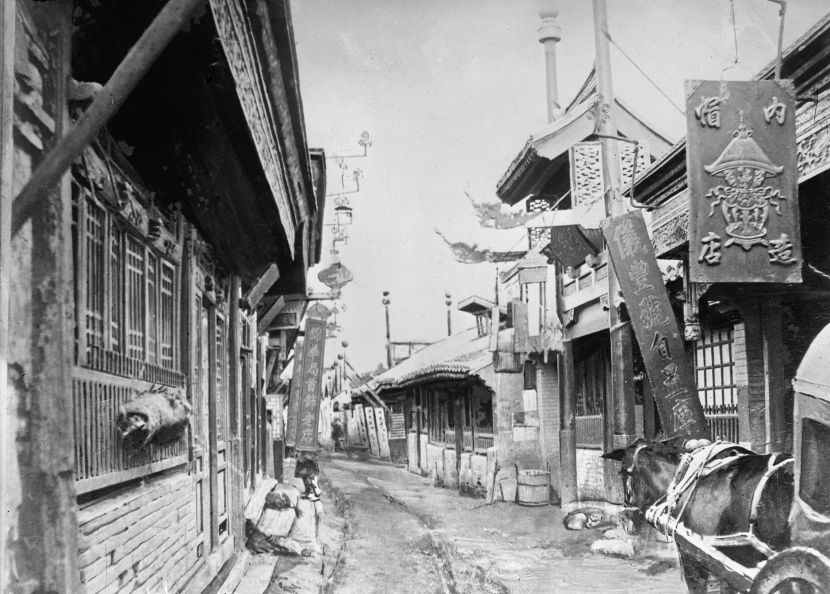An American Socialite in the Dusty Streets of Dashilar
“The most picturesque and interesting city of China, the most unique of all the world’s capitals.”
Travelling in Asia, pioneering female journalist Eliza Scidmore was truly taken with Beijing when she started visiting the city in the 1890s. When she first arrived, the city was still divided into two parts - a Manchu inner city to the north, and a Chinese outer city in the south. She saw the grand Qianmen gate as the artery of the capital and observed ”the great streams of trade and travel between the inner and outer cities…carts, donkeys, camels, chairs, wheelbarrows, and foot passengers streaming through from sunrise to sunset.”
In the southern Chinese city she detailed the poverty outside the inner city wall with morbid fascination. Venturing south from the Qianmen gate she saw: “beggars, lepers, and loathsome wretches cling to the sunny curve of the outer wall like hideous flies…wrecks of men, emaciated or bloated, in the last stages of starvation’s diseases, crawl to one’s very cart-wheels, or lie helpless with glazed eyes.”
Moving on into the commercial district around the Dashilar street she adds:
“Beyond the beggars’ bridge there is a half-mile of outdoor shops and booths extending down the west side of the Meridian Street. Snuff-bottles of every kind, small objects in jade, crystal and semi-precious stones, entrap one’s attention, and but for the offensive, infragrant, gaping, jeering crowd that presses around one, he could loiter with delight for hours…”
One thing in particular stood out to Scidmore on the streets:
“The streets hang full of “beckoning boards,” gold-lettered on black or vermillion grounds, and the carved and gilded fronts of medicine-, tea-, and sweetmeat-shops are often so elaborate that one wants to put them under glass, since all around he sees the wreck of them, loaded with the grime of countless searing dust-storms”
Eliza Scidmore was not the first to notice the street signs of Beijing. In fact, books with hand painted shop signs were one of the most popular souvenirs from Beijing in the late eighteenth and early nineteenth century.
Having traveled extensively in other parts of Asia, Eliza Scidmore recognized that Beijing was a melting pot of different cultures: “Peking is the capital of all China. Yet what interests and piques one most…and distinguishes it from the other cities of the empire, are the things that are not Chinese.”
These “unchinese” elements that she talks about were predominantly Manchu. In the northern city, Scidmore marveled at the Manchu women who, unlike the Chinese women, were seen in the streets and did not bind their feet.
Eliza Scidemore (1856–1928)
Eliza Scidmore visited Beijing three times and regretted deeply the decay she witnessed in the time that passed between her visit in the early 1890s and the years following the Boxer war in 1900, when large parts of the city were severely damaged. However, her feelings of regret did not prevent her from purchasing some of the looted imperial treasures which flooded the market in the aftermath of the conflict. In 1902, she acquired the throne of the empress dowager Cixi herself that had been looted from the Summer Palace from a dealer on Hatamen Street, bringing it back to the USA where it was placed on display in Washington D.C.
Born in Iowa in 1856, Eliza Scidmore is best known as an early contributor to the National Geographic Society and its magazine, and for her role in introducing Japanese Cherry Blossoms to the parks of Washington DC in 1912. A self-described “author, journalist, traveler, and collector of the lore and artifacts of far-off lands”, she made several trips to China from 1884 to 1922 whilst her brother George was stationed in Yokohama, Japan, with the US Consular Service. Her writings on China include the 1892 travel guide “Westward to the Far East: a guide to the principal cities of China and Japan,” and the 1900 “China, The Long-Lived Empire.”

